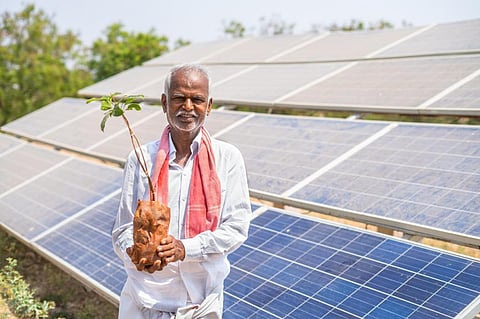India’s LiFE is a climate action lesson for the world
India’s Prime Minister Narendra Modi challenged the country and the world to follow a ‘Lifestyle For the Environment’ — LiFE — at the 26th Conference of Parties (COP26) to the United Nations Framework Convention on Climate Change held in Glasgow in November 2021.
A recent analysis by the International Energy Agency (IEA) concluded that India has walked the talk already by integrating some of the LiFE policies into its strategy for energy transition. One major outcome of LiFE has been to make India more efficient than the world and the G20 by 10 per cent. If the world were to fall in line with LiFE, over 20 per cent of reductions needed by 2030 for staying on the path to Net Zero emissions can be accomplished.
Holding the presidency of G20 currently, India is in a position to exhort G20 and the rest of the world to follow LiFE. The idea of LiFE is to adopt climate-friendly choices in everyday life and engender collective action with peer-pressure via social networks.
The G20 effect can be expected to percolate through the rest of the world to bring about a large-scale behavioural change that has generally been seen as a pipe-dream thus far.
One can imagine that polluting can become a social stigma like smoking has almost become. India and the world as a whole are envisioned to throw away the disposable goods concept and grow into a sustainable circular economy with mindfulness in consuming resources without producing non-recyclable waste.
India’s coverage of energy access grew from half its population to all the citizens faster than any other country, the IEA analysis pointed out. Unlike China and the other advanced economies, India reached this goal without relying on coal as heavily as other countries such as China did.
India has leapfrogged the fossil-fuel based approach of the other countries by becoming the third-largest national market in the world, while growing the rooftop solar deployment by 30 times in under a decade.
Policies and incentives have driven the surge in electric vehicles as well, although charging stations and clean energy for charging have yet to catch up.
Regarding the debate about whether the behavioural changes needed to drive consumer choices consistent with LiFE are humanly possible at all, India has demonstrated that this is possible in energy transition.
Energy transition remains the big gorilla in the room for reaching Net Zero goals. A total of over two gigatonnes of carbon dioxide emission reductions can be achieved by 2030, which amounts to 20 per cent of the total needed to stay on target for Net Zero.
Needless to say that this is just the beginning. Governments at all levels have to play a strong role in providing the infrastructure, policies and incentives to make LiFE itself sustained.
Public transportation and a network of charging stations, for instance, will be crucial to ensure that equitable and just access to mobility is accessible to all. This is a clear example of the need for decarbonising the entire system, so that the individuals are free to make LiFE choices free from the systemic carbon trap.
The IEA modelling estimates that a total saving of $440 billion can be reaped by the consumers by 2030, if measures to meet LiFE are fully implemented. This is tantamount to 5 per cent of the global economy’s expenditure on fuels in 2030.
Considering the great reductions needed in per capita emissions by the Global North by 2030, LiFE provides a more level-playing ground for all. The Global South will have a greater energy and emissions budget under LiFE, while reducing the overall emissions from humanity and also staying on track for Net Zero.
It’s not all roses in reality of course. India’s per capita gross domestic product has grown from 20 per cent of the world average in 2000 to over 40 per cent of the world average, which is an excellent indicator of a growing middle class and an improved standard of living and reduced poverty.
This, however, also means that per capita energy demand, emissions, demand for steel and cement as well as car ownerships have also increased. India’s per capita coal consumption was at 60 per cent of the global average in 2021 and India is expected to rely on coal for well over a decade even as the renewables continue to grow.
There are positive signs in India in terms of programmes in clean cooking, reducing emissions intensities of energy, cement and fuel for light-duty vehicles.
Adoption of LiFE across the world will lead to behavioural changes in consumption and choices in housing, transportation, appliances, aviation and buildings, among others. With governments offering supportive policies, infrastructure and incentives, consumers will enjoy the co-benefits.
An emerging market and a developing economy leading on climate action will be the dawn of a new era. And with the co-benefits in terms of improved air and water quality and well-being, LiFE is bound to be beautiful in the new era.

